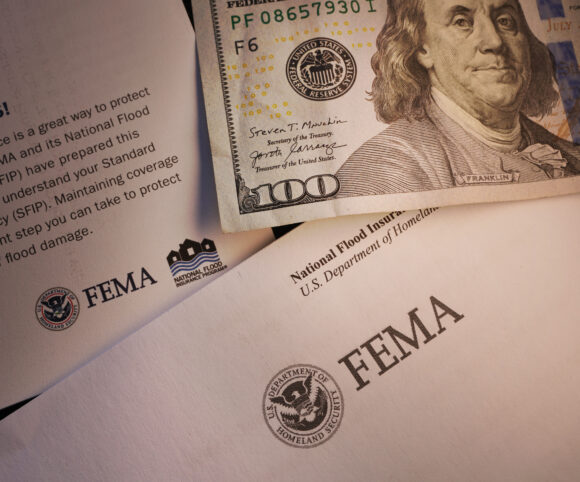David Richardson, the new head of the Federal Emergency Management Agency, said on Thursday that states would in the future bear half the costs for responding to natural disasters, up from 25% under current cost-sharing levels.
Richardson, who took the helm at FEMA one week ago in an abrupt change of leadership, said he believed the agency would likely cut its financial outlay to half of what a state needs to respond to a disaster as part of future reforms.
He also vowed to narrow the agency’s operations to only what is spelled out in law and to push more of the cost burden for disaster response down to the states, in line with the wishes of the Trump administration.
“FEMA 2 will look different than FEMA 1. There will be much more emphasis on the states to do response and recovery, to some degree preparedness as well,” Richardson told a staff town hall.
A FEMA spokesperson did not immediately respond to a Reuters request for more details on Richardson’s comments.
It was the second time Richardson met with staff after replacing acting FEMA chief Cameron Hamilton last week. Hamilton was ousted abruptly after telling a congressional hearing he did not support eliminating the agency.
Related: Acting FEMA Chief Is Ousted After Less Than 4 Months
Hamilton’s comments to Congress went against the views of Department of Homeland Security Secretary Kristi Noem and President Donald Trump, who have both called for the agency to undergo drastic reforms and potentially be abolished.
In his initial address to staff last week, Richardson said he would “run right over” any staff who resisted his efforts to reform the agency.
Related: ‘Don’t Get in My Way,’ the New Acting Head of FEMA Warns Staff
Richardson, a former Marine artillery officer and combat veteran, fleshed out his vision for the first time on Thursday with potential percentages.
He said he had advised staff to alert governors to the possibility of an increased cost-share in disaster response.
“I said, ‘Hey, when you talk to the governor, give them a heads up that 50/50 might be coming. It’s 75/25 right now, but 50/50’s coming,'” Richardson said. “So part of it is letting people know as we transition, okay, that if it doesn’t happen this year, it will very, very likely happen next year.”
Richardson also said there would be instances in which states needed more help financially and that FEMA would provide it.
Richardson has taken the helm at FEMA at a time when it has been shedding staff while preparing for what leading forecasters predict will be a busier-than-average Atlantic hurricane season, which starts on June 1.
Democratic lawmakers have also voiced concerns about staffing at the National Oceanic and Atmospheric Administration, which is scrambling to reassign 155 workers to its weather service, including to key forecasting positions in hurricane-prone states, according to a document reviewed by Democratic staff on the House Committee on Science, Space and Technology.
A NOAA spokesperson said in a statement that “service level standards for its weather forecast offices” had been updated to “manage impacts due to shifting personnel resources.”
Topics FEMA
Was this article valuable?
Here are more articles you may enjoy.



 CEO Sentenced in Miami to 15 Years in One of the Largest Health Care Fraud Cases
CEO Sentenced in Miami to 15 Years in One of the Largest Health Care Fraud Cases  UPS Ripped Off Seasonal Workers With Unfair Pay Practices, Lawsuit Alleges
UPS Ripped Off Seasonal Workers With Unfair Pay Practices, Lawsuit Alleges  Injured Pedestrian Strikes Out on PIP Benefit Because Car She Dodged Never Struck Her
Injured Pedestrian Strikes Out on PIP Benefit Because Car She Dodged Never Struck Her  Aon Adds to List of Brokers Suing Howden US for Alleged Poaching, Theft
Aon Adds to List of Brokers Suing Howden US for Alleged Poaching, Theft 

